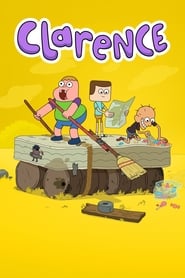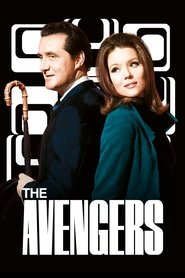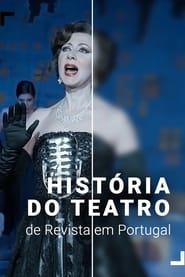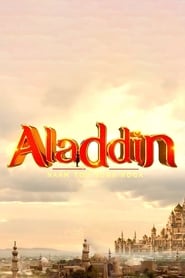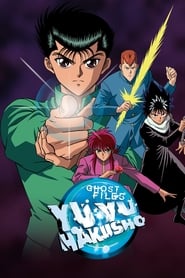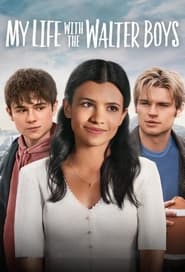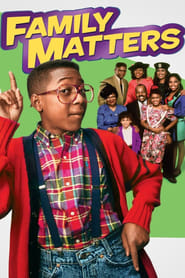Popular TV Series on Pantaflix - Page 52
-
Outer Banks
2020
Outer Banks
2020
star 8.3A tight-knit group of teens unearths a long-buried secret, setting off a chain of illicit events that takes them on an adventure they'll never forget. -
Guddan - Tumse Na Ho Payega
2018
star 6.8Guddan faces a big challenge when she becomes a mother-in-law to three daughters-in-law after marrying Akshat, a widower. -
Girlfriends
2000
Girlfriends
2000
star 7.3The series revolves around the friendship of four African-American women in different phases of their lives. They explore the many trials and tribulations that most women face today such as relationships, family, friends and other current issues that will interest most women. Whether it’s getting over a divorce, finding a career, or looking for true love, Girlfriends delivers along with comedy and wit. -
Clarence
2014
Clarence
2014
star 8In a world of noise, Clarence is a jar of sunshine, pure and simple. He sees the world only in his favorite colors: goofy grape and neon green. Clarence values his friends Jeff and Sumo and his mother Mary more than gold. No matter what happens, good or bad, nothing brings Clarence down. -
The Avengers
1961
The Avengers
1961
star 7.7A quirky spy show of the adventures of eccentrically suave British Agent John Steed and his predominantly female partners. Jonathan Steed - an urbane, proper gentleman spy - teams with various assistants throughout the series' run, including Dr. David Keel, Cathy Gale, Emma Peel and Tara King, to repeatedly save the world from diabolical schemes plotted by equally diabolical evil-doers (among them robots and man-eating monsters). -
Totally Spies!
2002
Totally Spies!
2002
star 7.2Totally Spies! depicts three girlfriends 'with an attitude' who have to cope with their daily lives at high school as well as the unpredictable pressures of international espionage. They confront the most intimidating - and demented - of villains, each with their own special agenda for demonic, global rude behavior. -
Grizzy & the Lemmings
2016
star 7.2The forest ranger's house is the only area of human civilization in the middle of untamed wilderness in a vast natural reserve in Canada. When the ranger is away, a bear named Grizzy feels that the ranger's house is his territory, given that bears sit at the top of the food chain. After making his way inside the home, Grizzy takes advantage of all the modern conveniences there, including a comfortable sofa, air conditioning and fully equipped kitchen. He's not alone, though, because a group of small creatures called lemmings also populate the ranger's house when he is away. Because Grizzy and the lemmings are not civilized enough to live together in peace, it becomes an atmosphere of madness when the two sides try to outdo each other with tricks. -
Formula 1: Drive to Survive
2019
star 8.1Drivers, managers and team owners live life in the fast lane - both on and off the track - during one cutthroat season of Formula 1 racing. -
The Rockford Files
1974
The Rockford Files
1974
star 7.6Cranky but likable L.A. PI Jim Rockford pulls no punches (but takes plenty of them). An ex-con sent to the slammer for a crime he didn't commit, Rockford takes on cases others don't want, aided by his tough old man, his lawyer girlfriend and some shady associates from his past. -
The Center Seat: 55 Years of Star Trek
2021
star 6.9In honor of the sci-fi franchise’s 55th anniversary this year and produced by The Nacelle Company, the project will feature interviews with cast, crew and experts as it explores pivotal moments in the franchise’s history, from its inception at Lucille Ball’s production company Desilu to recent film and television adaptations. -
Aladdin - Naam Toh Suna Hoga
2018
star 7Aladdin is an age old fantasy tale and about struggles with family and love. Inspired by the book, 'The Arabian Nights', this is an attempt to tell the classical tale of Aladdin. -
8 Out of 10 Cats
2005
8 Out of 10 Cats
2005
star 7.18 Out of 10 Cats is a British television comedy panel game produced by Zeppotron for Channel 4. It was first broadcast on 3 June 2005. The show is based on statistics and opinion polls, and draws on polls produced by a variety of organizations and new polls commissioned for the programme, carried out by company Harris Poll. The show's title is derived from a well-known advertising tagline for Whiskas cat food, which originally claimed that "8 out of 10 cats prefer Whiskas". -
The Adventures of Jimmy Neutron: Boy Genius
2002
star 7.4Jimmy Neutron is the smartest kid in town. As a genius, Jimmy thinks most things can be solved with the invention of a new gizmo. But Jimmy usually takes the easy way out, and his backfiring gadgets result in comedic adventures. -
Yu Yu Hakusho
1992
Yu Yu Hakusho
1992
star 8.5After dying to save a boy, delinquent tough guy Yusuke Urameshi is granted another chance at life by redeeming himself as a "Spirit Detective." -
BEASTARS
2019
BEASTARS
2019
star 8.4In a world where beasts of all kinds coexist, a gentle wolf awakens to his own predatory urges as his school deals with a murder within its midst. -
My Life with the Walter Boys
2023
star 7.8When a tragedy disrupts her life, a teen moves in with her guardian's big family in a small town and learns new lessons about love, hope and friendship. -
Family Matters
1989
Family Matters
1989
star 6.7A long-running dramedy centering on the Winslow family, a middle-class African American family living in Chicago, and their pesky next-door neighbor, ultra-nerd Steve Urkel. A spin-off of Perfect Strangers. -
Ridiculousness
2011
Ridiculousness
2011
star 6.8Rob Dyrdek takes the funniest amateur internet videos and builds them into an episode of edgy, funny, and most importantly, timeless television.
 Netflix
Netflix
 Amazon Prime Video
Amazon Prime Video
 Apple iTunes
Apple iTunes
 Apple TV Plus
Apple TV Plus
 Disney Plus
Disney Plus
 Google Play Movies
Google Play Movies
 Paramount Plus
Paramount Plus
 Hulu
Hulu
 HBO Max
HBO Max
 YouTube
YouTube
 fuboTV
fuboTV
 Peacock
Peacock
 Peacock Premium
Peacock Premium
 Amazon Video
Amazon Video
 The Roku Channel
The Roku Channel
 AMC+
AMC+
 Kocowa
Kocowa
 Hoopla
Hoopla
 The CW
The CW
 Vudu
Vudu
 Starz
Starz
 Showtime
Showtime
 PBS
PBS
 Pantaflix
Pantaflix
 FXNow
FXNow
 Tubi TV
Tubi TV
 Kanopy
Kanopy
 Comedy Central
Comedy Central
 Crunchyroll
Crunchyroll
 Microsoft Store
Microsoft Store
 Redbox
Redbox
 Sun Nxt
Sun Nxt
 ABC
ABC
 DIRECTV
DIRECTV
 Crackle
Crackle
 Fandor
Fandor
 Plex
Plex




